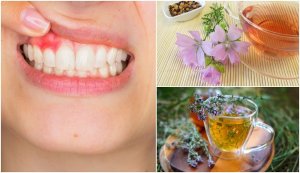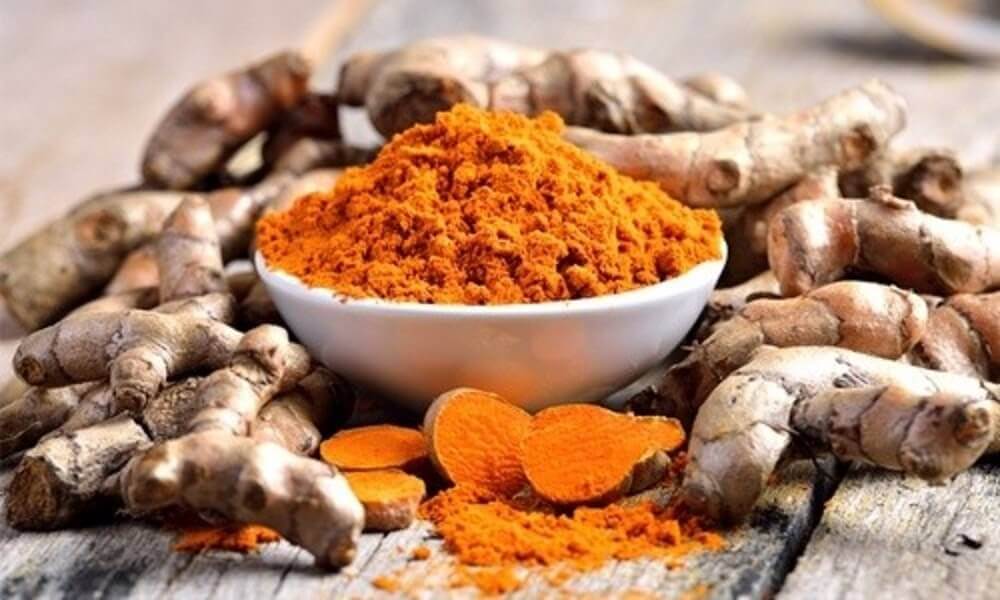5 Natural Home Remedies for Gingivitis


Reviewed and approved by the doctor Maricela Jiménez López
Gingivitis is a result of plaque buildup on your teeth. It consists of inflammation of the gums, which comes along with reddening and bleeding. It’s a mild form of periodontal disease, and therefore requires immediate medical attention to prevent periodontitis or tooth loss.
The most common cause is poor oral hygiene, but it can also be caused by smoking or illnesses that weaken the immune system. Professionals can help put an end to the problem before it spreads to nearby tissues and bones.
In addition, there are several great natural solutions to help speed up your recovery. Today we’d like to go over the main symptoms of gingivitis and give you some home remedies to make you feel better.
Read on and see what they are!
What are the symptoms of gingivitis?
A person with gingivitis will see changes in their gums due to inflammation. Usually the problem manifests with:
- Reddened, inflamed gums
- Gums that bleed easily when you brush your teeth
- Bad breath (halitosis)
- Receding gums
- Sensitive gums
- White spots or plaque on your gums
Natural solutions for gingivitis
If you suspect gingivitis, you should see a professional. That said, certain natural remedies can go a long way in reducing the severity of your symptoms.
1. Turmeric versus gingivitis

Ingredients
- 1/2 teaspoon powdered turmeric (2 g)
- 1 tablespoon of water (15 ml)
Preparation
- Add the turmeric to the water.
How to use
- Smooth the paste over your gums and gently massage it in.
- Let sit 5 minutes and then rinse.
- Repeat twice a day.
2. Thyme
The antibacterial compounds in thyme extract can help fight infections associated with gingivitis. In addition, its anti-inflammatory properties help with gum problems and keep them from bleeding.
Ingredients
- 2 tablespoons of thyme (30 g)
- 1 cup of water (250 ml)
Preparation
- Add the thyme to a cup of boiling water and then cover.
- Let cool to room temperature, and then strain.
How to use
- Use the cooled tea as a mouthwash 2 or 3 times a day.
- Gargle for 2 minutes for best results.
3. Geraniums

Another antibacterial plant that can help remove dental plaque is the geranium. Using it as a natural mouthwash will keep bacteria from growing and affecting your gums.
Ingredients
- 2 tablespoons of geranium (30 g)
- 1 cup of water (250 ml)
Preparation
- Add the geranium to a cup of water and heat.
- Once boiling, lower the heat and simmer 2 more minutes.
- Let sit and cool until it reaches about room temperature.
- Strain and then use as a mouthwash.
How to use
- After brushing, use the liquid as a mouthwash.
- Use daily until you see improvement.
4. Mallow for treating gingivitis
Mallow has a mild pain-relieving and anti-inflammatory effect with the ability to reduce swelling of your gums, and thus relive your pain. Using it as a mouthwash will keep bacteria from growing and help remove little bits of food that end up forming plaque.
Ingredients
- 2 tablespoons of dried mallow (30 g)
- 1 cup of water (250 ml)
Preparation
- Add the dried mallow to a cup of boiling water and then cover.
- Let cool for 10 minutes and strain.
How to use
- Use the mallow tea as a mouthwash 2 or 3 times a day.
5. Aloe vera, honey, and hydrogen peroxide

This natural paste made out of aloe vera, honey, and hydrogen peroxide deep cleans your mouth, eliminating germs that cause infection. The anti-inflammatory effect it has will reduce swelling in your gums and also help with pain and bleeding.
Ingredients
- 2 tablespoons of aloe vera gel (30 g)
- 1 tablespoon of honey (25 g)
- 5 drops of hydrogen peroxide
Preparation
- Add the ingredients to a container and stir until well-mixed.
How to use
- Smooth the treatment over your gums and let sit 5 minutes.
- Rinse and repeat twice a day.
In addition to using these natural remedies, remember to practice good oral hygiene and see your dentist regularly.
All cited sources were thoroughly reviewed by our team to ensure their quality, reliability, currency, and validity. The bibliography of this article was considered reliable and of academic or scientific accuracy.
- Trombelli, L., Farina, R., Silva, C. O., & Tatakis, D. N. (2018). Plaque-induced gingivitis: Case definition and diagnostic considerations. Journal of Periodontology. https://doi.org/10.1002/JPER.17-0576
- Bascones-Martinez, A., Criado-Camara, E., Bascones-Ilundain, C., Arias, S., & Bascones-Ilundai, J. (2011). Etiology of Gingivitis. In Gingival Diseases – Their Aetiology, Prevention and Treatment. https://doi.org/10.5772/24831
- Singh, B., & Singh, R. (2013). Gingivitis – A silent disease. IOSR Journal of Dental and Medical Sciences.
- Murakami, S., Mealey, B. L., Mariotti, A., & Chapple, I. L. C. (2018). Dental plaque–induced gingival conditions. Journal of Clinical Periodontology. https://doi.org/10.1111/jcpe.12937
This text is provided for informational purposes only and does not replace consultation with a professional. If in doubt, consult your specialist.








